Recreational Therapy: A Vital Complement in Autism Care
Recreational therapy, encompassing structured activities and experiential learning, is emerging as a powerful approach for improving social, behavioral, and emotional outcomes in individuals with Autism Spectrum Disorder (ASD). Beyond traditional clinical interventions like Applied Behavior Analysis (ABA), recreational strategies leverage physical activities, group sports, and leisure pursuits to foster essential skills and mitigate stress. This article explores the multifaceted benefits of recreational therapy for people with autism, highlighting evidence-based practices, interventions, and outcomes relevant to individuals across the lifespan.
Understanding the Role of Recreational Therapy in Autism Care
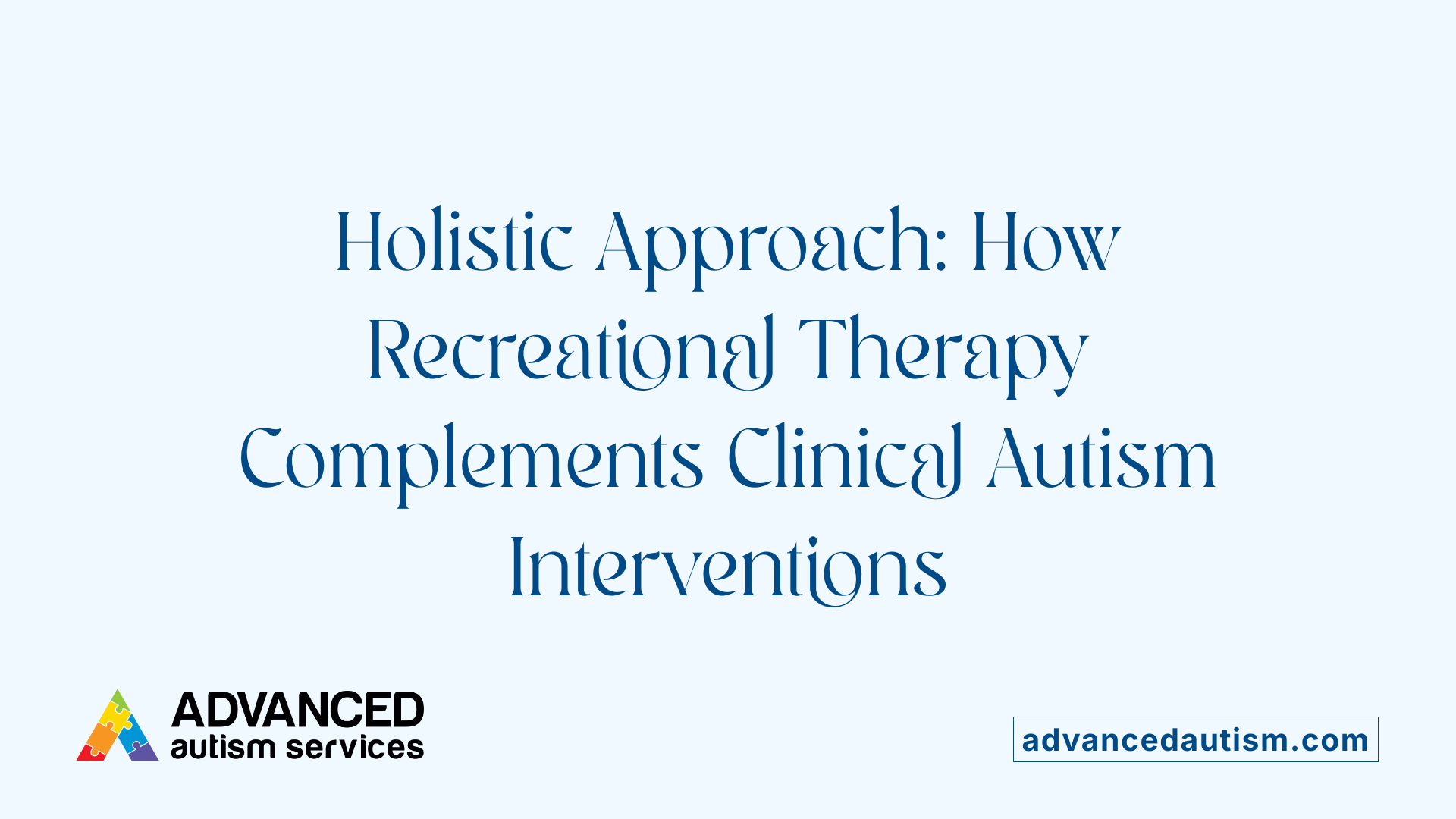
What is Recreational Therapy in Autism?
Recreational therapy involves structured recreational activities designed to improve health and well-being, tailored in this context to individuals with autism spectrum disorder (ASD). It encompasses both group-based and solo leisure activities, such as ball games, exercise, walking, hobbies, and more. These activities are delivered in natural settings and often use experiential learning to promote social interaction, motor skills, communication, and sensory functioning among individuals with ASD.
How Does Recreational Therapy Complement Clinical Approaches?
Recreational therapy works alongside clinical interventions like Applied Behavior Analysis (ABA) by targeting social communication, stress management, and quality of life. For example, 12-week ball game training programs (BCTP and MBTP) combined with behavioral rehab have shown stronger improvements in social communication than standard rehabilitation alone. Recreational activities also serve as effective stress buffers for adults with ASD, reducing the negative impact of perceived stress on quality of life.
Furthermore, interventions such as aquatic programs, multisport camps, and animal-assisted therapies enhance motor and social skills, sleep quality, and family leisure experiences, supplementing clinical goals. Visual supports and structured communication tools facilitate exercise and leisure participation, reinforcing skills critical for independence. These multidimensional interventions enrich conventional therapies by addressing social, sensory, and behavioral challenges in a holistic and engaging way.
Recreational Activities as Stress Buffers for Adults with ASD

What is the impact of perceived stress on quality of life for adults with ASD?
Adults with Autism Spectrum Disorder (ASD) tend to experience higher levels of perceived stress, which is strongly linked to a poorer quality of life. Elevated stress can exacerbate challenges in social, emotional, and daily functioning, diminishing life satisfaction and well-being.
How does recreational participation mitigate stress effects?
Engagement in recreational activities serves as an effective buffer against the negative effects of stress for adults with ASD. Research shows that those who regularly participate in these activities experience less impact of perceived stress on their quality of life. This stress mitigation enhances emotional resilience and overall well-being.
What types of recreational activities are beneficial for adults with ASD?
Both organized group activities and solo leisure pursuits benefit adults with ASD. Examples include:
- Hobbies that stimulate interest and creativity
- Walking and outdoor exercise promoting physical health and relaxation
- Structured exercise routines tailored to individual needs Through these activities, individuals develop essential leisure skills and experience improved socialization, self-confidence, and independence.
| Aspect | Details | Benefits |
|---|---|---|
| Impact of Stress | High perceived stress correlates with poorer quality of life in adults with ASD | Decreased well-being |
| Stress Buffering Activities | Organized sports, hobbies, walking, solo exercise | Reduced negative stress impact |
| Outcomes of Participation | Enhanced social communication, confidence, and independence | Improved life satisfaction |
In summary, recreational therapy fundamentally supports adults with ASD by mitigating stress effects, thereby enhancing quality of life and promoting holistic well-being.
Group-Based Sports and Social Communication Enhancement in Children with ASD
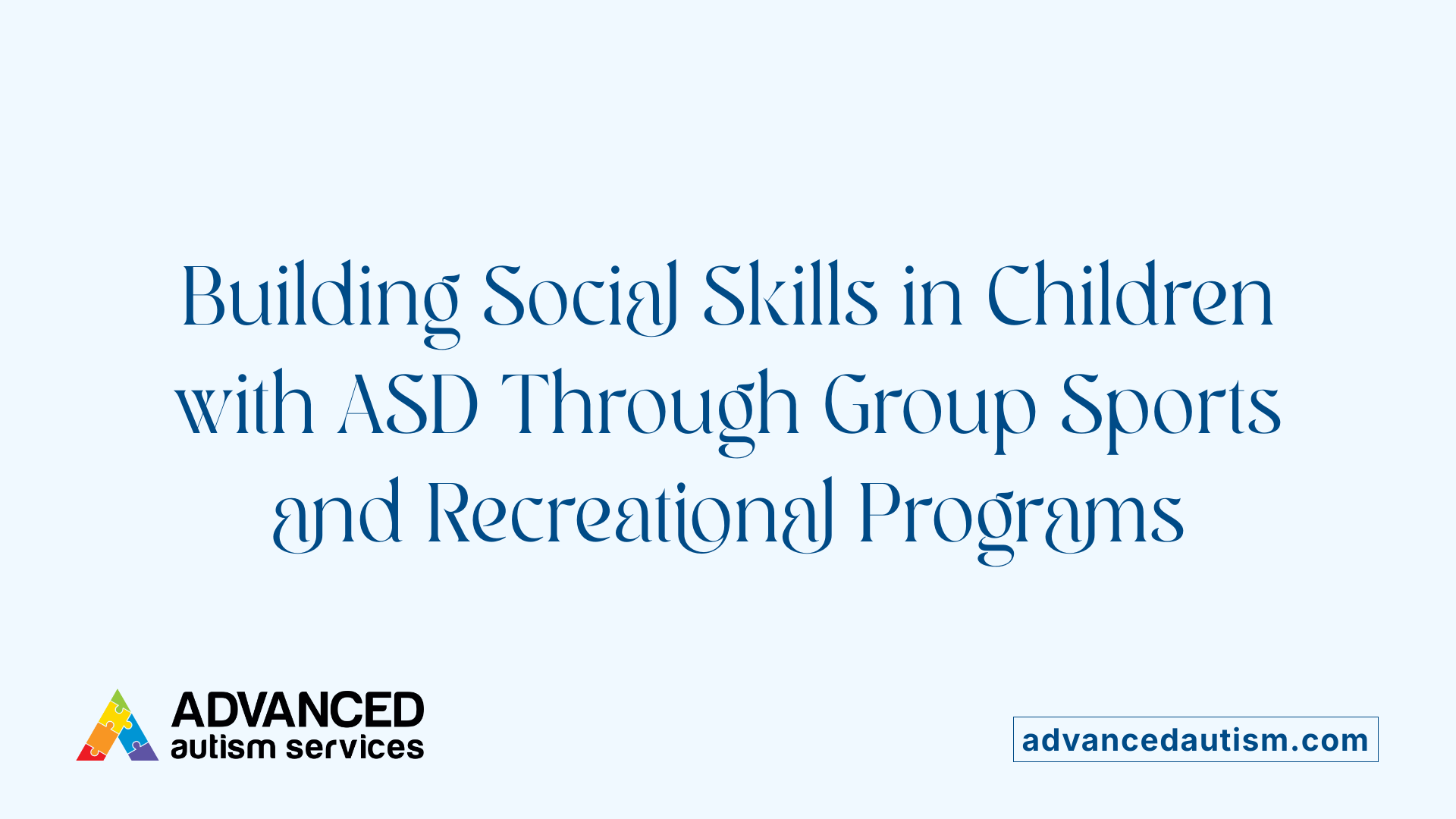
How do ball game-based physical training programs (BCTP and MBTP) support social communication in children with ASD?
Two 12-week physical training programs, the Ball-Game-Based Training Program (BCTP) and the Modified Ball-Game Training Program (MBTP), have shown significant benefits for preschool children with Autism Spectrum Disorder (ASD). These interventions focus on group-based, team sports that promote social interaction, coordination, and communication. By engaging children in structured ball games, these programs create natural opportunities for experiential learning that fosters critical social skills.
What improvements in social communication were measured by the Social Responsiveness Scale?
Assessments using the Social Responsiveness Scale, Second Edition (SRS-2) revealed that both BCTP and MBTP produced meaningful improvements in social communication impairments. Specifically, BCTP enhanced social awareness and patterns of behavior, while MBTP significantly improved social cognition and overall social communication abilities. These targeted improvements address multiple facets of social functioning often challenged in children with ASD.
How do these recreational adjunct therapies compare with standard rehabilitation?
When combined with standard behavioral rehabilitation, BCTP and MBTP yielded greater social communication benefits than standard rehabilitation alone. In fact, the control group receiving only the usual rehabilitation experienced worsening outcomes over the same period. This evidence underscores the value of incorporating recreational ball games as adjunct therapies, highlighting their role in improving social communication more effectively than conventional treatments by themselves.
Sensory and Behavioral Benefits of Nature-Based Group Interventions
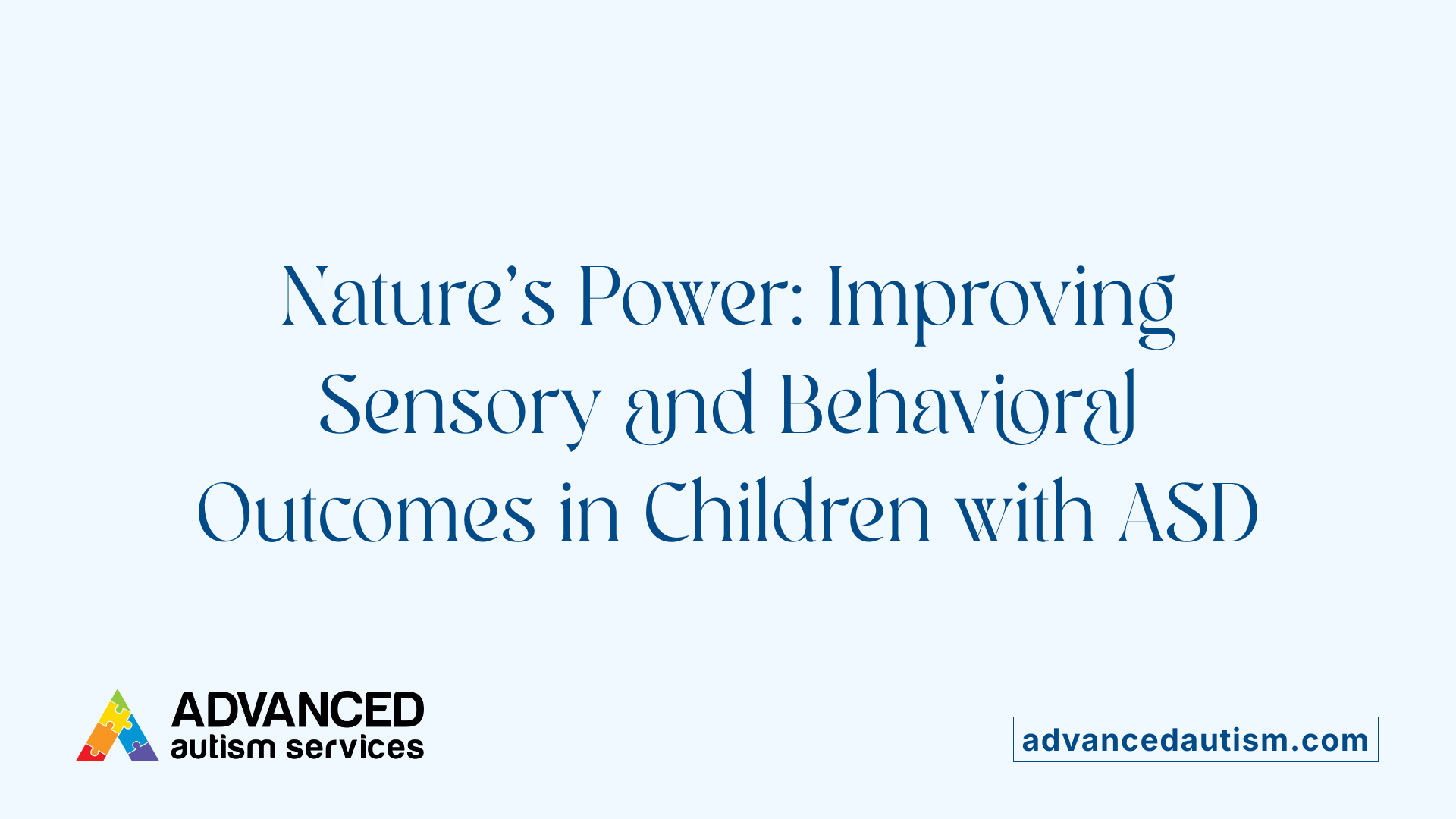
What short-term sensory improvements are observed in nature-based interventions for ASD?
Nature-based group interventions have been associated with notable short-term improvements in sensory processing among children with autism spectrum disorder (ASD). Specifically, there are significant positive effects on sensory seeking behaviors and sensory sensitivity, which are key sensory challenges in individuals with ASD. These improvements help children better respond to stimuli in their environment, enhancing overall sensory regulation.
How do nature-based interventions affect hyperactivity, irritability, and distractibility?
Engagement in natural settings through group-based exposures reduces common behavioral symptoms such as hyperactivity, irritability, and distractibility. Quantitative assessments show moderate decreases in hyperactivity and irritability while inattention and distractibility also improve substantially. These behavioral benefits contribute to better self-regulation, allowing children with ASD to participate more fully in social and educational activities.
What role does face-to-face experiential group therapy in natural outdoor settings play?
These interventions are delivered primarily as face-to-face, group-based experiential therapy sessions held outdoors in natural environments. The immersive, hands-on nature of these sessions fosters social interaction and sensory integration in a dynamic yet supportive context. Being in a natural setting amplifies the therapeutic impact by reducing stress and providing stimulating yet calming sensory inputs, critical for improving both sensory and behavioral outcomes in ASD.
| Symptom/Behavior | Nature-Based Intervention Effect | Description |
|---|---|---|
| Sensory Seeking | Improved | Enhanced engagement with sensory stimuli |
| Sensory Sensitivity | Improved | Better modulation of sensory input |
| Hyperactivity | Reduced | Decreased excessive motor activity |
| Irritability | Reduced | Lower levels of agitation and frustration |
| Distractibility | Reduced | Increased attention span and focus |
These findings underline the value of nature-based group interventions as a complementary approach for managing sensory and behavioral symptoms in children with ASD.
Enhancing Motor and Social Skills Through Specialized Recreational Programs

Aquatic programs and multisport camps outcomes
Specialized recreational programs such as aquatic programs and multisport camps have shown significant benefits for individuals with autism spectrum disorder (ASD). An eight-week sensory-enriched aquatics program notably improved sleep behaviors in children over 14 years, particularly those with decreased severity of autism. Additionally, a five-day multisport camp focusing on girls aged 8 to 11 resulted in significant enhancements in both motor and social skills, highlighting the potential for these interventions to support developmental progress.
Improvements in sleep behavior, motor control, and social interaction
These programs contribute to multiple areas of well-being. The aquatic program positively impacted sleep, a critical aspect of overall health that can often be disrupted in individuals with ASD. Multisport camps bolstered motor control and social interaction, fostering better coordination and increased opportunities for peer engagement. Together, these benefits suggest that structured recreational activities can address physical, social, and sensory challenges frequently experienced by those with ASD.
Effectiveness of animal-assisted therapy and leisure education
In addition to physical activity-based programs, animal-assisted therapy (AAT) and leisure education have demonstrated positive outcomes. A systematic review of canine therapy interventions indicated beneficial effects on social and emotional functioning in individuals with autism. Furthermore, family involvement in leisure activities, such as therapeutic camps, was linked to enhanced family leisure awareness and social support, which are important for sustained well-being. Leisure education programs focus on developing individual leisure skills tailored to the person’s interests and abilities, supporting lifelong participation and quality of life.
These specialized therapeutic recreation interventions provide a comprehensive approach to improving motor skills, social communication, sleep, and family dynamics, thereby contributing to holistic development in individuals with ASD.
The Importance of Therapeutic Recreation Professionals in ASD Support
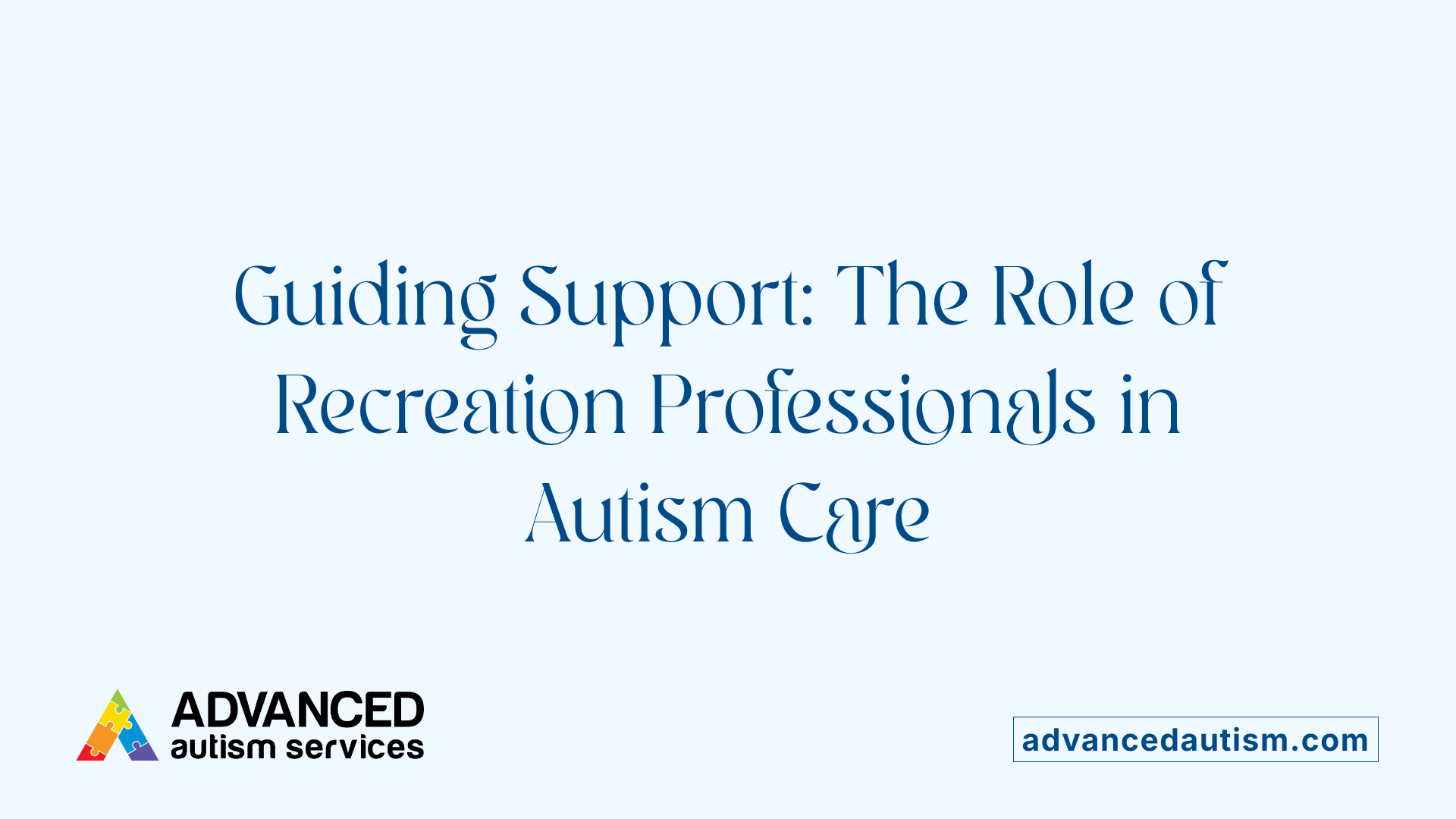
Roles of Therapeutic Recreation Professionals
Therapeutic recreation professionals play a crucial role in supporting individuals with Autism Spectrum Disorder (ASD) by developing and sustaining health and recreation-related skills. They design and implement interventions that address the unique needs of people with ASD, helping to improve their quality of life. These professionals use leisure-based activities not just for enjoyment but as therapeutic tools to enhance social interaction, communication, motor skills, and emotional regulation.
Addressing Challenges in Reciprocal Interaction and Leisure Skill Development
Individuals with ASD often face difficulties with reciprocal interaction, self-initiation, motor planning, and activity planning. These challenges can limit their leisure repertoires and social engagement. Therapeutic recreation professionals focus on overcoming these barriers through tailored interventions. Group-based activities, structured social games, and solo leisure pursuits like walking or exercise help individuals build confidence and improve communication skills.
Strategies to Increase Health and Recreation-Related Skills
Using evidence-based approaches such as aquatic programs, multisport camps, animal-assisted therapy, and leisure education, therapeutic recreation professionals foster skill development tailored to individual needs. Visual supports and structured communication tools reduce anxiety and improve predictability during these activities. Integrating adaptive sports like tennis, golf, and swimming, along with personalized exercise regimens, promotes socialization, independence, and self-confidence. By employing these strategies, therapeutic recreation professionals significantly enhance the well-being and overall quality of life for individuals with ASD.
Tailoring Exercise Interventions to Individual Needs
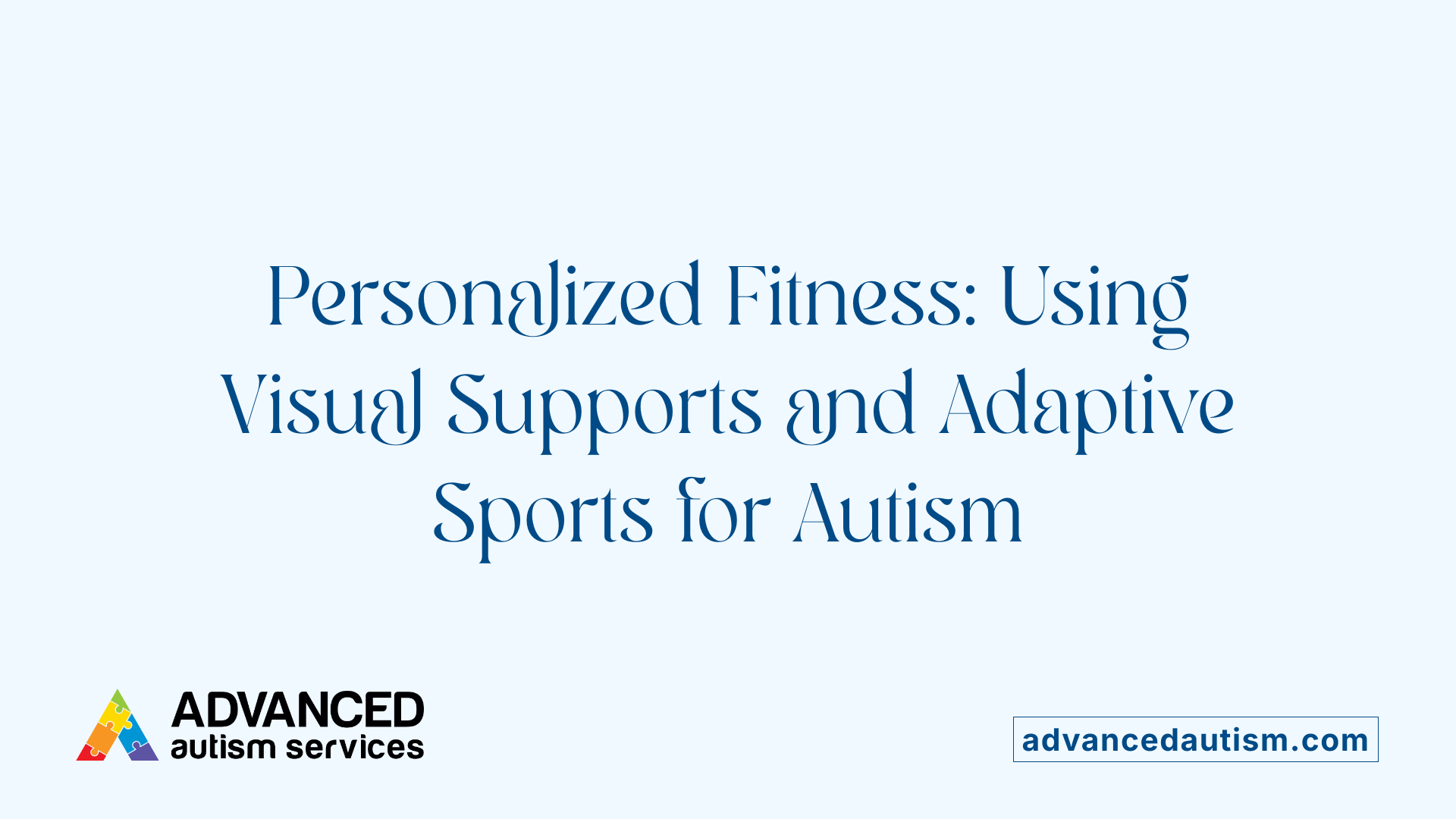
How can visual supports and communication tools enhance participation in exercise programs for individuals with autism?
Visual supports and structured communication tools play a crucial role in exercise interventions for individuals with autism. These tools help reduce anxiety by making activities more predictable and easier to understand. For example, using picture schedules or communication boards can clarify exercise steps and expectations, fostering a more comfortable and successful environment for participation.
What are some examples of adaptive sports suitable for individuals with autism?
Adaptive sports tailored for individuals with autism include tennis, golf, swimming, and strength and endurance training. These activities are often modified to accommodate individual interests and abilities, ensuring a positive and engaging experience. Incorporating a participant’s preferences into the plan enhances motivation and sustained involvement.
What benefits do tailored exercise interventions offer for socialization, self-confidence, and independence?
Engaging in personalized exercise programs has demonstrated improvements in socialization by increasing willingness to communicate and initiate conversations. Self-confidence grows as individuals master new skills and experience success in sports settings. Additionally, these interventions promote independence by encouraging self-initiation and activity planning, which translate into daily living skills and overall quality of life.
| Aspect | Description | Impact on Individuals with ASD |
|---|---|---|
| Visual Supports & Communication | Picture schedules, structured communication tools to reduce anxiety and enhance clarity | Increase participation and reduce stress during exercise sessions |
| Adaptive Sports | Tennis, golf, swimming, strength and endurance training adapted to interests | Greater engagement and motivation |
| Social & Emotional Benefits | Improved social communication, self-confidence, and independence | Enhanced quality of life and social integration |
Recreational Therapy's Impact on Social Participation and Communication
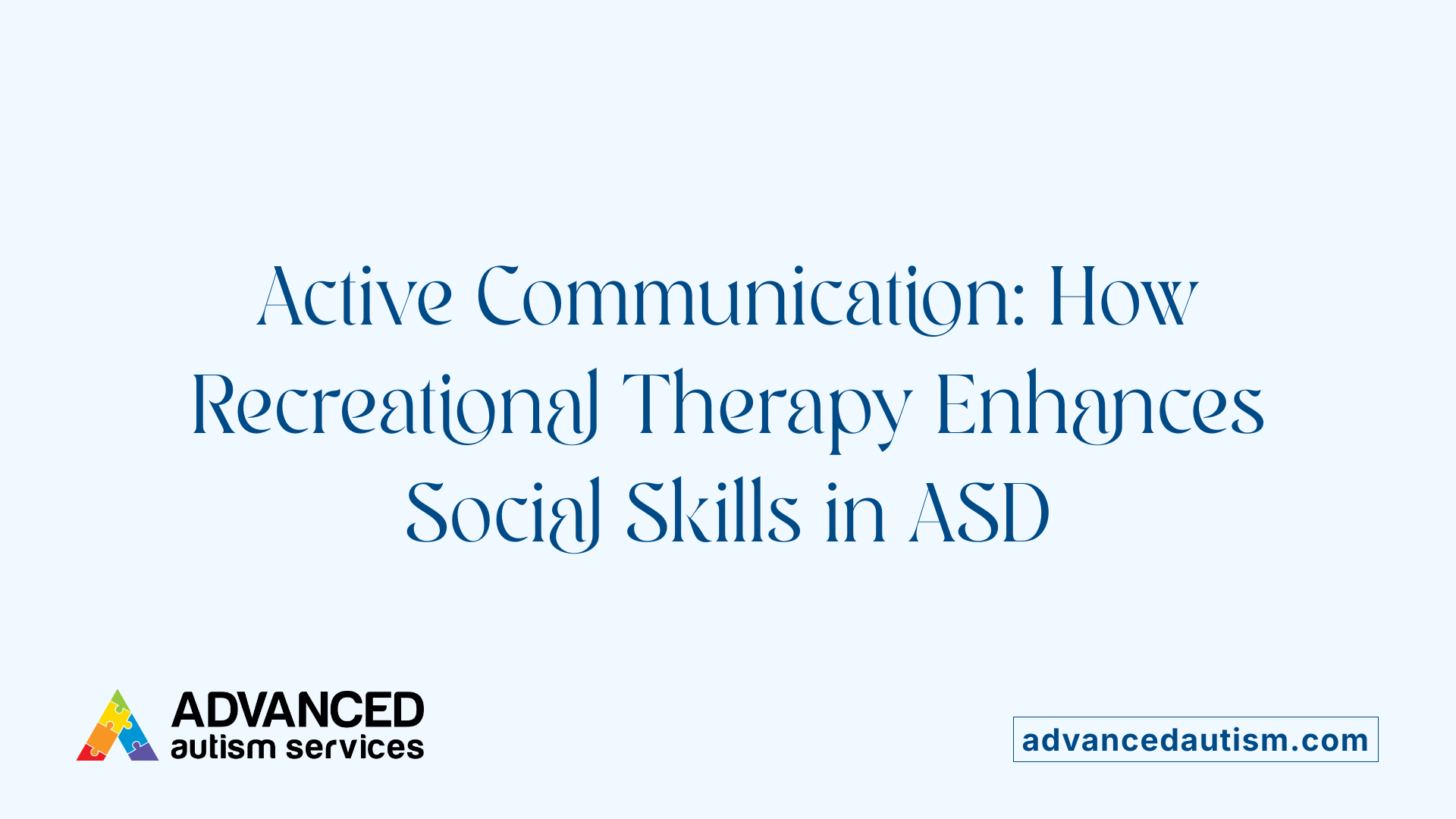
How does recreational therapy improve willingness to communicate and initiate conversation?
Recreational therapy, especially when involving group-based activities such as ball games and team sports, encourages social interaction in a natural, enjoyable setting. These structured experiences foster increased willingness in individuals with ASD to communicate and initiate conversations. Participants often show observable positive changes, including eagerness to engage socially and enhanced confidence when initiating communications. This improvement arises from the supportive environment and the focus on shared activities that naturally require verbal and nonverbal interaction.
In what ways does recreational therapy develop joint attention and social skills?
Interventions like the 12-week Ball-Game Coordination Training Programs (BCTP and MBTP) provide focused opportunities for children with ASD to enhance social communication skills, including joint attention. These programs, alongside other group-based outdoor activities, have been shown to improve areas such as social awareness, social cognition, and behavior patterns. Experiential group activities promote coordination and reciprocal interaction, which are crucial for developing joint attention—a foundational social skill that supports meaningful exchanges and social learning.
How is recreational therapy integrated with occupational therapy strategies?
Recreational therapy complements occupational therapy approaches by addressing social and leisure challenges through engaging, structured activities. Occupational therapy interventions such as social skills groups and parent-mediated strategies improve social participation; adding recreational activities enhances these benefits by providing dynamic environments for practicing communication and social skills. Moreover, visual supports and structured communication tools used in exercise and recreation programs reduce anxiety and improve predictability, making social participation more accessible for individuals with ASD. This synergy helps develop functional social skills applicable across multiple settings.
| Aspect | Recreation Therapy Approach | Outcome for ASD Individuals |
|---|---|---|
| Communication Initiation | Group ball games and team sports | Increased willingness to communicate and initiate conversations |
| Joint Attention and Social Skills | Structured, experiential group activities like BCTP and MBTP | Improved social cognition, awareness, and behavior patterns |
| Therapy Integration | Combined occupational and recreational interventions | Enhanced social participation and reduced anxiety |
Applied Behavior Analysis (ABA) Therapy Explained
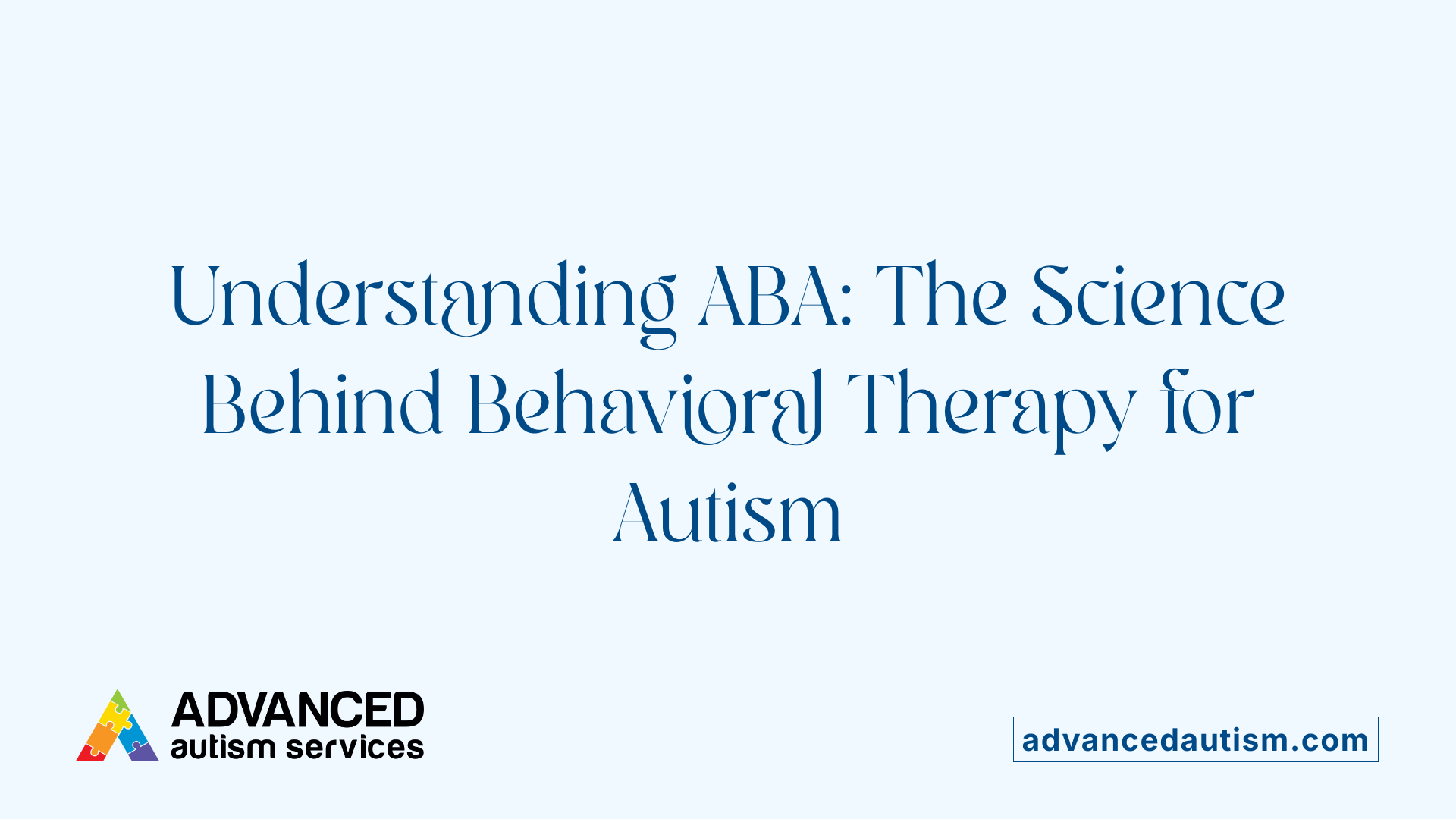
What is Applied Behavior Analysis (ABA) therapy?
Applied Behavior Analysis (ABA) therapy is an evidence-based approach grounded in the science of learning and behavior. It seeks to increase helpful behaviors and reduce harmful or problematic ones through positive reinforcement, prompting, modeling, and task analysis. ABA programs are tailored to each individual's needs and involve qualified professionals who systematically assess behaviors, set specific goals, and collect data over time to track progress.
Definition and core principles of ABA
ABA therapy operates on the principle that behavior is influenced by its consequences. By reinforcing desirable behaviors and minimizing reinforcement of harmful behaviors, ABA helps individuals learn new skills and adapt better to their environment. Techniques like breaking down complex skills into smaller, manageable steps allow for gradual skill acquisition.
Individualized goal setting and data-driven methods
A hallmark of ABA is its individualized approach. Therapists collaborate with families and caregivers to set specific, measurable goals that target areas of need. Data is collected continuously to adjust strategies and validate effectiveness, ensuring that interventions lead to meaningful improvements.
Skills targeted including communication and social interaction
ABA therapy focuses on core developmental areas such as communication, social interaction, self-care, and academic skills. For example, therapists might work on improving verbal skills, initiating social contact, or teaching routines that promote independence. This comprehensive skill development makes ABA highly effective, especially for individuals with autism spectrum disorder.
How ABA Therapy Benefits Individuals with Autism
How does ABA therapy benefit individuals with autism?
ABA (Applied Behavior Analysis) therapy provides significant benefits to individuals with autism by enhancing communication, social, and daily living skills. This therapy uses structured and personalized interventions that focus on increasing helpful behaviors and decreasing those that interfere with learning.
Positive reinforcement plays a central role in ABA, encouraging individuals to repeat desirable actions through rewards and praise. Tailored strategies based on thorough assessment ensure that therapy meets each person’s unique needs, promoting more meaningful progress.
ABA therapy is versatile and can be delivered in multiple environments, including at home, schools, or community settings. This flexibility allows for continuous learning and skill application in real-world situations.
Early and intensive ABA interventions have been demonstrated to improve language abilities, socialization, independence, and emotional regulation. These improvements contribute to a better overall quality of life by increasing functional skills necessary for everyday activities.
In summary, ABA therapy is an evidence-based approach supported by extensive research. It helps individuals with autism develop essential skills through measurable progress, ultimately supporting enhanced participation and autonomy in their lives.
Provision of ABA Therapy Services: Who Are the Providers?
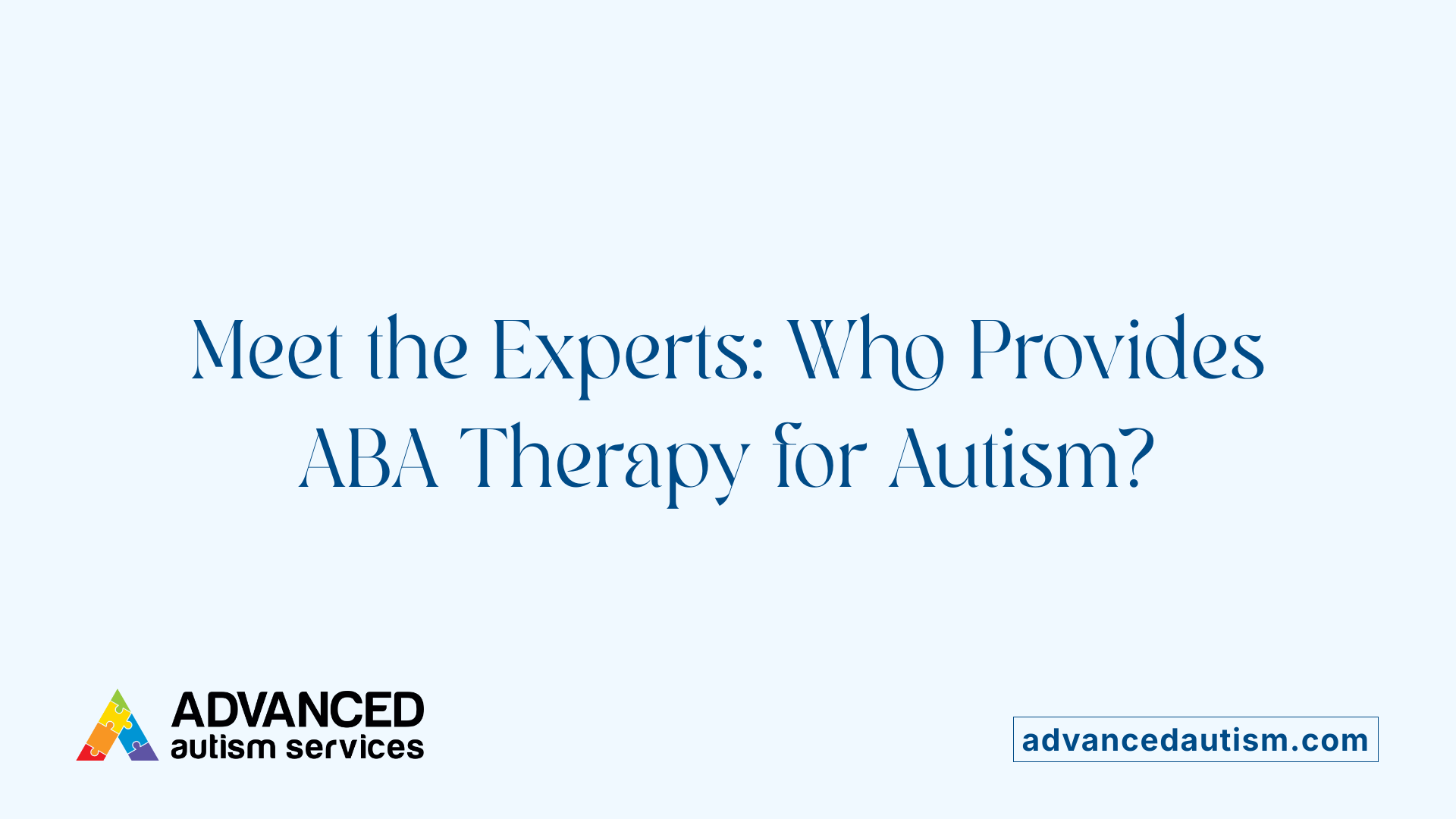
Who provides ABA therapy services?
ABA therapy is delivered by a multidisciplinary team of specialists, primarily including Board Certified Behavior Analysts (BCBAs), Board Certified Assistant Behavior Analysts (BCaBAs), and Registered Behavior Technicians (RBTs).
Qualifications and roles of BCBAs, BCaBAs, and RBTs
- BCBAs act as clinical leaders responsible for designing individualized treatment plans, conducting behavioral assessments, and supervising therapy teams.
- BCaBAs assist BCBAs by helping with direct interventions, collecting and analyzing data while working under BCBA supervision.
- RBTs are frontline therapists who directly implement treatment protocols by engaging with clients one-on-one during therapy sessions.
Responsibilities in assessment, planning, and direct delivery
BCBAs typically manage the overall therapeutic process including initial assessments, goal setting, and ongoing supervision. BCaBAs support these tasks and help ensure accurate execution of plans. RBTs carry out daily therapies, facilitating skill acquisition and behavioral improvements through consistent session work.
Importance of credentialing and ethical standards
ABA providers commonly operate within specialized agencies focused on autism services. These organizations emphasize that all staff maintain proper credentialing, complete thorough training, and adhere to established ethical guidelines. Families seeking services are encouraged to verify provider qualifications, certifications, and experience to guarantee effective and trustworthy support.
Factors to Consider When Choosing an ABA Therapy Provider
What should someone consider when choosing an ABA therapy provider?
Selecting the right Applied Behavior Analysis (ABA) therapy provider involves several important factors to ensure effective support for a child with autism spectrum disorder (ASD).
Credentials and Experience Start by verifying that the provider employs qualified professionals, such as Board Certified Behavior Analysts (BCBAs). Additionally, experience with evidence-based interventions like Discrete Trial Training (DTT), Pivotal Response Treatment (PRT), or the Early Start Denver Model (ESDM) is essential. These approaches are well-supported by research and target key areas such as communication, socialization, and behavior.
Individualized and Data-Driven Plans Look for providers who develop personalized treatment plans based on the child’s unique strengths, challenges, and goals. They should use ongoing data collection to monitor progress and adjust interventions accordingly. This approach enhances effectiveness and ensures the therapy remains responsive to the child's evolving needs.
Therapy Environment and Caregiver Involvement The setting of therapy—whether at home, in a clinic, or at school—should be supportive and conducive to learning. A welcoming and engaging environment helps children participate fully. Moreover, providers that prioritize caregiver involvement help empower families to support the child’s development outside of therapy sessions, improving consistency and promoting generalization of skills.
Logistics Including Location and Insurance Practical concerns like the therapy location, accessibility, and insurance coverage play a critical role in maintaining consistent attendance and minimizing stress. Check whether providers accept your insurance plan and consider convenience to manage scheduling easily.
Choosing an ABA therapy provider who thoughtfully integrates these considerations creates a strong foundation for effective intervention and meaningful progress for children with ASD.
Integration of Recreational Therapy and ABA for Holistic ASD Care
How do recreational and ABA therapies complement each other in ASD treatment?
Recreational therapy and Applied Behavior Analysis (ABA) offer complementary benefits for individuals with autism spectrum disorder (ASD). Recreational activities, including structured group sports and solo hobbies, encourage social interaction, motor skills improvement, and emotional regulation, serving as effective buffers against stress. ABA focuses on behavioral interventions targeting communication, social skills, and reducing restrictive or repetitive behaviors. Combining these approaches allows for a more comprehensive treatment, addressing multiple developmental domains simultaneously.
How do these therapies support social, motor, and emotional development?
Recreational interventions such as ball game programs and sensory-enriched aquatic activities promote social communication improvements and motor skills development through experiential group settings. Meanwhile, ABA-based strategies enhance social participation by fostering joint attention, communication initiation, and behavior regulation. Exercise and adaptive sports further increase self-confidence, independence, and positive socialization experiences. Together, these therapies reduce hyperactivity, irritability, and sensory sensitivities, contributing to holistic emotional well-being.
In what ways can collaborative approaches improve quality of life for individuals with ASD?
Implementing a collaborative approach integrating recreational therapy and ABA interventions enhances quality of life by fostering physical health, social competence, and emotional resilience. Family involvement in recreational activities provides social support and reinforces therapeutic gains. Therapists using visual supports and structured communication tools can tailor programs to individual needs and preferences, increasing engagement and predictability. By aligning goals across therapies, practitioners can create personalized plans that optimize participation, skill development, and stress management for people with ASD.
Challenges Faced by Individuals with Autism in Leisure and Social Participation
What difficulties do individuals with autism face in reciprocal interaction and motor planning?
Individuals with autism spectrum disorder (ASD) frequently encounter challenges in reciprocal interaction, which can hinder the natural give-and-take of social engagement. They may struggle with self-initiation of activities and effective motor planning, making it difficult to coordinate physical movements and participate smoothly in group or solitary activities. These difficulties can lead to reduced opportunities for social connection and involvement in leisure activities.
How are leisure repertoires and activity initiation limited in those with ASD?
Many individuals with ASD have limited leisure repertoires, meaning they engage in a narrower range of recreational activities compared to their typically developing peers. This limitation often stems from difficulties in initiating activities independently and challenges in planning and executing leisure pursuits. Because of these barriers, they might miss out on vital experiences that promote social and emotional growth.
How can tailored interventions address these barriers to participation?
Tailored therapeutic recreation interventions are crucial in overcoming these hurdles. Strategies such as aquatic programs, multisport camps, animal-assisted therapy, and structured leisure education focus on developing motor skills, enhancing social communication, and expanding leisure skills. These individualized interventions, often delivered in group-based, natural settings, foster social interaction, coordination, and communication. By leveraging visual supports and structured communication tools, these programs reduce anxiety and improve predictability, thereby encouraging sustained engagement in recreational activities. Consequently, these approaches help individuals with ASD broaden their leisure participation, promote social skills, and enhance overall well-being.
Evidence Gaps and Future Directions in Autism Recreational Therapy Research
Why is there a need for more robust scientific studies to evaluate intervention effectiveness?
Current research on recreational therapy for individuals with autism spectrum disorder (ASD) reveals several promising intervention strategies, yet highlights notable evidence gaps. Many existing studies demonstrate positive outcomes—for instance, improvements in social communication, motor skills, and stress management. However, some interventions aimed at enhancing play, leisure engagement, and reducing restrictive behaviors still report less conclusive results.
The limited sample sizes, variability in intervention designs, and inconsistent use of control groups often reduce the ability to generalize findings broadly. Robust scientific methods such as randomized controlled trials and larger meta-analyses are needed to confirm observed benefits and identify the most effective components of recreational therapies.
What promising strategies exist, and which areas remain less conclusive?
Evidence supports a variety of interventions, including group-based sports, adaptive exercise programs, aquatic therapy, and animal-assisted therapy, all showing improvements in social skills, sensory processing, and quality of life. For example, twelve-week ball game interventions produced measurable improvement in social communication among preschool children with ASD.
In contrast, approaches targeting play and leisure-related restrictive and repetitive behaviors require further validation. Additionally, more clarity is needed on how best to personalize interventions to individual ASD profiles to optimize outcomes.
Why is ongoing research vital for validating and refining interventions?
Given the heterogeneity of ASD and the complex challenges faced by individuals, continuous high-quality research is essential to advance the effectiveness of recreational therapies. This includes refining intervention protocols, integrating supportive tools like visual aids to reduce anxiety, and developing customized, evidence-based leisure programs.
Further investigation will also support occupational therapists and recreation professionals in applying best-practice methods that enhance social participation and overall well-being. Through rigorous scientific inquiry, the field can evolve to offer more targeted, measurable, and sustainable improvements in the lives of people with ASD.
Moving Forward: Expanding Therapeutic Horizons for Autism
Recreational therapy has proven to be a valuable complement to established clinical interventions, offering tangible benefits across social, sensory, behavioral, and emotional domains for individuals with autism spectrum disorder. From reducing stress in adults to enhancing social communication in children, these interventions provide meaningful pathways to improved quality of life. When combined thoughtfully with evidence-based approaches like ABA, recreational therapy helps create holistic, individualized care plans tailored to the unique needs of each person with autism. Continued research, professional collaboration, and family involvement remain essential to maximizing these benefits and refining therapeutic strategies, ensuring that individuals with ASD have access to enriching, supportive, and empowering care throughout their lives.
References
- Participation in Recreational Activities Buffers the Impact ...
- Recreational ball games are effective in improving social ...
- Nature-Based Interventions for Autistic Children
- The Role of Therapeutic Recreation With People on ...
- Exploring Recreation Therapy for Individuals with Autism
- Effectiveness of Interventions to Improve Social Participation ...
- Applied Behavior Analysis (ABA)
- 6 Benefits of ABA Therapy for Children with Autism



